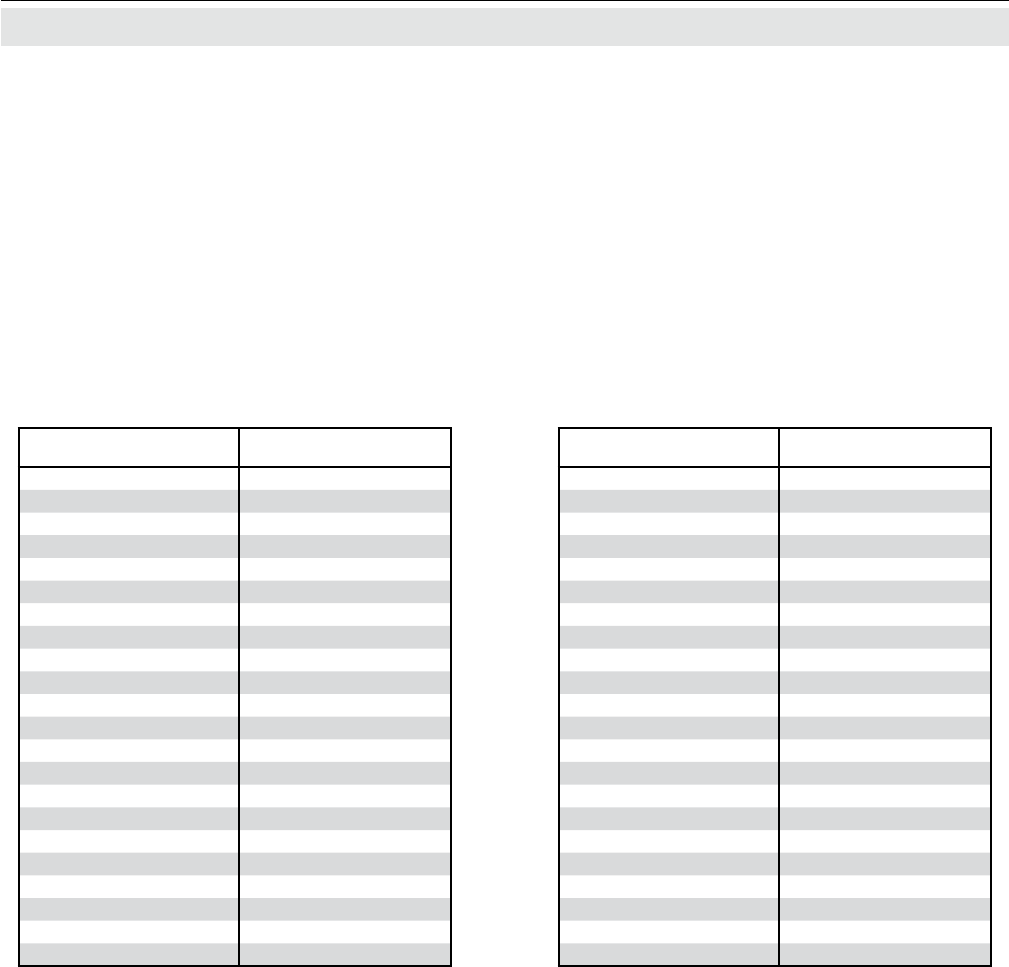
Emerson Process Management GmbH & Co. OHG3-6
X-STREAM XE
Instruction Manual
HASXEE-IM-HS
04/2010
3.2 Oxygen Measurement
3.2.1.1 Cross Interferences by Accompanying Gases
The table below shows, how accompanying
gases interfere the paramagnetical oxygen
measurement. If the concentration of such
gases is already given at time of enquiry, this
interference may be taken into account during
factory startup and thus minimized (option).
Tab. 3-1: Standard Paramagnetic Sensor -
Cross Interference by Accompanying Gases
100 % Gas Zero-level effect % O
2
Acetylene C
2
H
2
-0.24
Allene C
3
H
4
-0.44
Ammonia NH
3
-0.26
Argon A -0.22
Bromine Br
2
-1.30
1.2-Butadiene C
4
H
6
-0.49
1.3-Butadiene C
4
H
6
-0.49
n-Butane C
4
H
10
-1.11
i-Butene C
4
H
8
-0.85
cis 2-Butene C
4
H
8
-0.89
trans 2-Butene C
4
H
8
-0.92
Carbon dioxide CO
2
-0.27
Carbon monoxide CO +0.06
Chlorine Cl
2
-0.77
Cyclohexane C
6
H
12
-1.56
Ethane C
2
H
6
-0.43
Ethylene C
2
H
4
-0.26
Helium He +0.30
n-Heptane C
7
H
16
-2.10
n-Hexane C
6
H
14
-1.70
Hydrogen H
2
+0.24
Hydrogen bromide HBr -0.61
100 % Gas Zero-level effect % O
2
Hydrogen chloride HCl -0.30
Hydrogen ouride HF +0.10
Hydrogen iodide HI -1.10
Hydrogen sulphide H
2
S -0.39
Iodine I -2.40
Isobutane C
4
H
10
-1.11
Isobutane C
5
H
12
-1.49
Krypton Kr -0.51
Laughing gas N
2
O -0.20
Methane CH
4
-0.20
Neon Ne +0.13
Neoptane C
5
H
12
-1.49
Nitric acid HNO
3
+0.43
Nitrogen dioxide NO
2
+28.00
Nitrous oxide NO +40.00
n-Octane C
8
H
18
-2.50
n-Pentane C
5
H
12
-1.45
Propane C
3
H
8
-0.86
Propylene C
3
H
6
-0.55
Vinyl chloride C
2
H
3
Cl -0.63
Water H
2
O -0.02
Xenon Xe -0.95


















